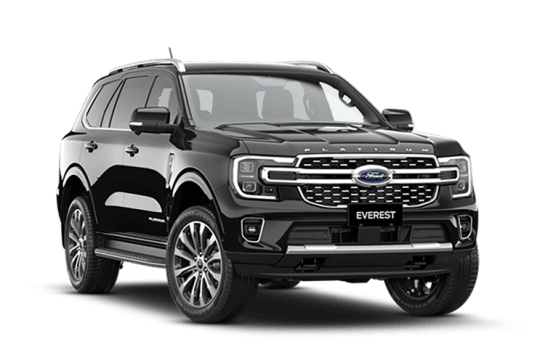
Jeep WRANGLER UNLIMITED VS Toyota Land Cruiser Prado
Jeep WRANGLER UNLIMITED
Likes
- Fun to drive
- Very capable off-road
- Ready for adventure direct from the showroom
Dislikes
- Price-tag
- Needs all-terrain tyres
- Lacks driver-assist tech
Toyota Land Cruiser Prado
Likes
- Still very effective off-road
- Big improvement on-road over previous gen
- Towing capacity increase to 3500kg
Dislikes
- Feels underpowered
- Compromised rear cargo area
- Isuzu MU-X, Ford Everest offer more value for money
Summary
Jeep WRANGLER UNLIMITED
The Jeep Wrangler is a very capable 4WD with real bush cred, but the all-out glory is usually reserved for the hard-core Wrangler variant, the Rubicon.
The Overland is often disparagingly referred to as the city Wrangler. But is that really the case? After all, it’s 'Trail Rated', as well.
We tested the four-door Overland over a seven-day period to see how it’d perform on-road, but most of our focus was on its comfort and capability in an off-road environment.
Read more about
Read on.
| Safety rating | |
|---|---|
| Engine Type | 3.6L |
| Fuel Type | Regular Unleaded Petrol |
| Fuel Efficiency | 9.7L/100km |
| Seating | 5 seats |
Toyota Land Cruiser Prado
Anticipation for the 2025 Toyota LandCruiser Prado was high, to say the least, because previous generations of the Prado have been much loved as 4WD touring vehicles. It was hoped that the new Prado would carry on that adventurous spirit but also represent a substantial shift forward for the model.
The new-generation Prado (aka the 250 Series) is larger than previous Prado iterations – it’s based on the same TNGA-F chassis as the LandCruiser 300 Series, the Lexus GX and the Toyota Tundra – and it is able to tow the industry standard 3500kg rather than the 3000kg the previous generation is limited to.
It also looks a lot different to previous Prados as it now has a straight-up-and-down retro-style appearance as opposed to the softer style of Prados past.
Read more about
- 'Toyota got it exactly right': Sluggish electric car growth in Australia shows Toyota's hybrid-first strategy the right path as sales of Toyota RAV4, Corolla Cross, Corolla and Kluger hybrids boom
- 2025 Toyota Prado order system changes, but will it affect how and when your Toyota LandCruiser, Toyota RAV4 or Toyota Corolla Cross hybrid arrives?
- First look at new 2026 Toyota HiLux: Has Toyota done enough to beat Ford Ranger, Isuzu D-Max, Mitsubishi Triton, BYD Shark 6 and Kia Tasman? Report
Our test vehicle, the Altitude variant, is the second most expensive grade in the range and is marketed as the most off-road-capable of the line-up. It has a locking rear differential, front sway bar disconnect system, and all-terrain tyres.
So, the new Prado is bigger and bolder than ever before – but is it better?
Read on.
| Safety rating | |
|---|---|
| Engine Type | 2.8L turbo |
| Fuel Type | Diesel |
| Fuel Efficiency | 7.9L/100km |
| Seating | 5 seats |
Verdict
Jeep WRANGLER UNLIMITED7/10
The Overland is (surprisingly) not atrocious on-road and (not surprisingly) very capable off-road. It costs a lot but, geez, it's a barrel of laughs.
If your heart is set on a four-door mid-size 4WD that's a whole lot of fun to drive, but rather impractical for daily life, then it’s difficult to over-look the Overland.
If you’re really gung-ho about hard-core off-roading – rock-crawling etc – then perhaps you should focus on the Rubicon, but for everything else the Overland, even on standard tyres, is more than capable.
Toyota Land Cruiser Prado7.4/10
Toyota has at last brought the Prado kicking and screaming into the 21st century.
Real improvements in design, tech, comfort and capability have changed what was consistently regarded as a solid off-road tourer and family conveyance into something much better.
This new-generation Prado is the best iteration of this vehicle: roomy and refined, well equipped, nice to drive, and now with a welcome increase in towing capacity, but it is underpowered for something so bulky.
Ultimately it feels like a missed opportunity – Toyota had a chance to rattle the cage with a real game-changer of a vehicle, but the Prado just isn’t that at all and, while it's good, it's not great as we’d all hoped.
Design
Jeep WRANGLER UNLIMITED
The Wrangler's appearance has been tweaked throughout the years without ever sacrificing any of the ol’ Wrangler spirit.
It has stuck to its traditional roots and, as such, retains its old-school chunkiness, which is good, but the Overland is less of a hardcore-looking 4WD and more of a lifestyle-suited off-roader than its Rubicon stablemate.
Though the Overland version has a certain blocky appeal, I reckon the Rubicon is better for having fully embraced the all-out off-road look and feel, tyres and all.
Toyota Land Cruiser Prado
The new Prado is 4990mm long (with a 2850mm wheelbase), 1980mm wide, 1935mm high, and it has a kerb weight of 2520kg. The wheel tracks are 1664mm at the front, and 1668mm at the rear.
As mentioned the Prado now sits on the same platform as the 300 Series so this is not an insubstantial vehicle.
It now has a distinctive chunky, almost straight up and down, old-school look whereas before the Prado carried softer lines.
The heritage square grille is big as is everything else onboard: with bulky wing mirrors, side steps, wheel arches and tyres adding to the vehicle’s wide, squat stance.
The Prado has rectangular LED headlights in Australia, whereas other markets have the option of the round retro-style lights on their 250 Series.
Overall, the Prado looks even better in the metal than it does in the photos that Toyota fans have been salivating over for so long.
Even with its styling changes and a new fresh all-encompassing look and feel the cabin of the Prado remains comfortably familiar. If you’ve ever spent any length of time in a LandCruiser then you know what I’m talking about.
Build quality is tremendous, fit and finish impressive, the seats are suitably supportive and the Prado’s cabin is an easy space in which to quickly become comfortable.
Practicality
Jeep WRANGLER UNLIMITED
What can you say about a vehicle that has a “wash-out interior with drain plugs” listed in its specs?
This is a purpose-built off-roader and the Overland’s five-seat cabin is a basic but functional space, in which it’s easy to immediately feel comfortable.
All dials, knobs and switches are easy to locate and chunky enough to operate while skipping over corrugations or climbing up steep rock steps.
There's leather everywhere – seats, steering wheel, shifter knob – but durable outdoors-tough surfaces also abound.
What always strikes me about the Wrangler interior is the fact that it’s abundantly clear Jeep designers regularly experience – or at least are familiar with – the type of life that Wranglers are aimed at: fun, dirty, rough-and-tumble adventures in the great outdoors.
There isn’t a lot of storage space inside but there are a few small, deep, and textured receptacles – ideal for keeping your bits and pieces in the same spot while you bounce around off-road – as well as grab handles, including a big sturdy one in front of the front-seat passenger.
There are also tensioned net pockets on the doors so you can throw stuff in there, but beyond those there aren't a lot of storage options.
There are air vents, two USB-C ports, and a 230V inverter in the centre console.
Rear cargo space is listed at 898 litres; with the rear seat stowed away, there is a claimed 2050 litres of room.
Toyota Land Cruiser Prado
The new Prado has some nice touches over and above the standard features fit-out of lower grades, such as a colour head-up display, digital rear-view mirror, heated steering wheel, power-adjustable steering column, heating and ventilation (front seats), eight-way power-adjustable driver seat and four-way power-adjustable for the front passenger, and genuine leather-accented upholstery throughout.
It also has a deep refrigerated centre console, 14-speaker JBL sound system and a sunroof.
The 12.3-inch multimedia touchscreen dominates the layout upfront and is easy enough to operate, though I did have strife getting Apple CarPlay to work off my phone but the cause was my dodgy old charge cord.
Speaking of charges, there are six USB-C ports (but no USB-A) in the cabin, and a wireless charger in front of the auto shifter.
There is a 12V DC socket (upfront) and a 220V/100W socket in the rear cargo area.
The second row is a 60:40 split-fold configuration and passengers there have access to aircon controls and directional vents as well as charge points.
Cargo space in the rear is listed as 954L with all seats in use, and 1895L if the second row is folded down. But the rear cargo area is compromised in its packability because of the raised floor (it’s lifted to house the 48-volt V-Active system’s battery) and also the bulky wheel-arch housings. This cargo area is a narrow, shallow space.
The load limit for the raised floor is labelled as 60kg.
There are cupholders at the rear (atop the wheel arch housings), which are leftovers from the three-row layout.
The rear cargo area has a 220V/100W socket, four tie-down points, and a sliding cover to conceal anything that’s left in the back.
There is some very shallow underfloor storage space under the rubber matting.
The rear space can be accessed from outside the vehicle through a window that is operated via a button on the rear door, or the whole rear door can be opened (it swings out from left to right) and locked in place.
The Prado has an underslung full-size spare.
Price and features
Jeep WRANGLER UNLIMITED
If you’re keen on one of these Jeeps you’ll have to be ready to sell one of your organs – and I don’t mean your church keyboard.
This five-seat vehicle as tested has a manufacturer suggested retail price of $86,950, excluding on-road costs.
The list of standard features is extensive, as it should be at this price, and includes an 8.4-inch multimedia touchscreen unit, Apple CarPlay and Android Auto, a nine-speaker Alpine premium audio system (with subwoofer), as well as premium touches like heating for the steering wheel and front seats, black leather trimmed seats (with ‘Overland’ logo), leather-wrapped gear-shifter knob and parking brake handle, 18-inch alloy wheels and more.
Exterior paint includes 'Bright White' (on our test vehicle) and black (both standard), and optional colours such as 'Silver Zynith', 'Sting Grey', 'Firecracker Red', 'Punk’n' (orange), 'Earl' (blue-ish grey), 'Hydro Blue' and 'High Velocity' (yellow).
If you opt for the 'Sky-One-Touch Premium Package' (which includes the 'Sky-One-Touch Power Top', and body colour fender flares) that’s an extra $6450.
Toyota Land Cruiser Prado
The 2025 Prado is available in five spec levels – GX, GXL (seven seats), VX (seven seats), Altitude and Kakadu (seven seats).
Our test vehicle, the Altitude, is a five-seater and it has a price-tag of $92,700 (excluding on-road costs).
Standard features include an 12.3-inch multimedia touchscreen system (with wireless Apple CarPlay and Android Auto), a 12.3-inch driver digital cluster, heated and ventilated leather-accented power-adjustable front seats, 360-degree camera system, three-zone climate control and a refrigerated centre console and more.
It gets a locking rear differential, Kinetic Dynamic Suspension System and Multi-Terrain Selector and monitor, but its driver-assist tech does not include a tyre-pressure monitoring system, which is strange for a vehicle that is being touted as the line-up’s most off-road-suited variant.
Exterior paint choices include 'Glacier White', 'Eclipse Black', and 'Ebony' – all standard, or optional paint jobs 'Frosted White', 'Midnight Alloy', 'Dusty Bronze', 'Tanami Taupe', 'Ningaloo Blue' – but optional paint plus two tone costs $1675.
Beyond the standard features, this test vehicle has the optional paint plus two tone ($1675) as well a raft of accessories:
- Kit, trailer wire, 12Pin: $411.30 RRP fitted
- EBC Kit (module): $211.50
- Wiring kit, brake controller (harness): $457.65 RRP fitted
- On-road towing kit: $270.70 RRP fitted
- Steel painted bull bar: $3853.60 RRP fitted
- Bull bar mount bracket kit: $315.00 RRP fitted
- Kit, bull bar harness: $535.90 RRP fitted
- Bash plate: $652.20 RRP fitted
- Kit, driving lamp bull bar harness: $228.15 RRP fitted
- Bull bar driving light fitting kit: $90.70 RRP fitted
- Driving light / lamp – 24 LED lightbar – external mount: $646.48 RRP fitted
- Winch: $3498.30 RRP fitted
- Winch spring: $621.80 RRP fitted
- Recovery point (front): $621.20 RRP fitted
- Recovery point (rear): $414.35 RRP fitted
- Floor mat set (all-weather mat), five-seater (2P second Row): $95.33 RRP fitted
- Cargo mat: $117.35 RRP fitted
The accessories total of $13,014.51 pushes this Prado’s price as tested to $107,416.51 (excluding on-road costs).
Under the bonnet
Jeep WRANGLER UNLIMITED
This Jeep has a 3.6-litre 'Pentastar' V6 engine – producing 209kW at 6400rpm and 347Nm at 4100rpm – and an eight-speed automatic transmission.
It's an effective engine-and-auto pairing for driving on sealed surfaces and well suited to high- and low-range 4WDing.
Toyota Land Cruiser Prado
The 250 Series Prado has 2.8-litre four-cylinder diesel engine – producing 150kW and 500Nm – with Toyota’s 48-volt V-Active technology.
V-Active technology comprises a motor generator, 48-Volt battery and DC/DC converter which enables a stop/start system and this set-up is “designed to offer … improvements in driveability, performance, fuel efficiency [up to approximately 10 per cent, as claimed] and noise, vibration and harshness (NVH) compared with the standard 2.8-litre turbo-diesel engine”, Toyota reckons.
The 48-volt V-Active technology essentially amounts to a stop-start system aimed at reducing fuel consumption, but it doesn’t add anything in terms of performance.
What’s more, it takes up space in the engine bay and the system’s 48V lithium battery weighs 7.6kg, so the total weight of the system – between 30-35kg, as estimated by Toyota – has to be taken into account when you’re aiming to load within the Prado’s 580kg payload.
It has an eight-speed automatic transmission and a full-time dual-range four-wheel-drive system.
This engine and auto arrangement is generally impressive – smooth, with plenty of torque across a wide rev range. It does, however, feel underpowered and it needs extra encouragement (heavy right boot) to get off the mark – but it otherwise yields a controlled and refined driving experience, especially on the open road at highway speeds.
Efficiency
Jeep WRANGLER UNLIMITED
Official fuel consumption is listed as 9.7L/100km on a combined cycle.
Actual fuel consumption on this test, from pump to pump, was 13.6L/100km, largely attributable to the fact I did a lot of low-range four-wheel driving on this test, as always.
The Wrangler Overland Unlimited has an 81-litre tank so, going by that fuel figure above, you could reasonably expect a driving range of about 595km from a full tank.
Note: Drop 30km to 50km from your total calculated fuel-range figure for a better idea of your vehicle’s safe touring range – so that figure above would be 565km.
Also, remember that numerous other factors affect your fuel consumption and so impact your touring range, including how much extra weight you have onboard (passengers, camping gear etc), whether your vehicle is fitted with any aftermarket equipment (bullbar, spare-wheel carrier, etc), whether you are towing (a camper-trailer, caravan, or boat etc), your vehicle's tyre pressures and the conditions.
Toyota Land Cruiser Prado
The Toyota LandCruiser Prado has an official fuel consumption of 7.6L/100km (on a combined cycle).
I recorded 10.4L/100km on this test. I did a lot of high- and low-range 4WDing and the Prado was never working hard.
The Prado has a 110L fuel tank so, going by my on-test fuel-consumption figure, you could reasonably expect a driving range of about 1057km from a full tank.
It has a 17.4-litre AdBlue tank.
Driving
Jeep WRANGLER UNLIMITED
The Wrangler Overland is a fun, go-kart style drive and yields a real driver-direct experience you get from few other contemporary vehicles on the blacktop and the dirt.
But while it’s nowhere near as atrocious as you might expect on sealed surfaces its planted, squared-off stance gives it a definite composure on bitumen. It’s certainly no sports car in terms of ride and handling.
It’s quite soft on-road, soaking up most imperfections with ease, but it also takes quite a lot of effort and concentration to keep this Jeep in line on the open road because it tends to float around on the blacktop if not constantly reined in.
Also, its steering has a lightness about it that can sometimes be a bit disconcerting.
The V6 is a gutsy unit, capable of punching the Overland along at a fair clip, all while the eight-speed auto handles clever and nicely controlled shifts.
Because it’s so blocky, straight up and down, with big wing mirrors and the like, the Overland is rather noisy on sealed surfaces.
But it remains one of the few modern vehicles that deserves to be driven with the windows down, because it offers that kind of visceral driving experience – as the LC70 Series, or Suzuki Jimny do.
So, how does the Overland perform off-road? Bloody glad you asked.
Spoiler alert: The Overland is not as good an off-roader as the Rubicon because it does not have that variant’s BFGoodrich Mud-Terrain tyres, 'Rock-Trac' active on-demand 4x4 system (with 4:1 transfer case*, and 77.2:1 crawl ratio), front and rear locking differentials, or the Rubicon’s very handy electronic front sway bar disconnect. (* The Overland has 2.72:1.)
But, having said that, the Overland is still an extremely capable off-roader.
To be honest, I wasn't expecting any strife because it retains all the traditional goodness of the Wrangler with very few compromises. It’s a genuine 4WD with a dual-range transfer case, a ladder chassis, solid axles and well-proven 4WD heritage.
In terms of size, the Overland is 4882mm long (with a 3008mm wheelbase), 1894mm wide, 1838mm high. It has a listed kerb weight of 1900kg.
Steering has a nice weight to it at lower speeds, giving the driver a great sense of sustained control through even the most severe obstacles, but the Overland’s turning circle is a listed 12.44m, so this off-roader can sometimes feel like a mini-bus to steer through tight turns.
However, this is a purpose-built off-roader with a wide wheel track and low centre of gravity, so it feels planted no matter how rough and bumpy the terrain gets.
On the gravel track to our off-road testing site, there are numerous steering-wheel-jolting corrugations but overall the Overland – with a coil spring at each corner – soaked them up.
Our 4WD loop included the aforementioned gravel tracks, light to medium corrugations, undulating mud tracks and mud holes, and some very challenging low-range 4WD sections (in particular, a steep rocky hill), and a few other set-pieces to see if the Overland was able to do everything safely and comfortably.
As a true 4WD worth its weight in gold, the Wrangler is immediately more at home taking on low-speed 4WDing than it is negotiating suburban traffic.
Again, the V6 engine comes into its own, delivering smooth, even torque when needed, but not ever over-working to achieve that.
Considered driving is necessary as is slow and steady throttle, but that's easily achieved in the Wrangler as its go pedal is none too sensitive to a bouncing boot.
It’s refreshing to note that switching to 4WD High or 4WD Low range is still done via a stubby stick to the left of the auto shifter, rather than the push of a button, or the turn of a dial.
Low-range gearing is very good and the Overland has a well-calibrated off-road traction control that seamlessly launches into action when required, and wasted wheelspin is kept to an absolute minimum.
This Wrangler has 242mm ground clearance and a standard wading depth of 760mm, and was never troubled on climbing steep rock steps, traversing deep ruts or punching through mudholes.
It’s supremely sure-footed during low-range work but visibility can be an issue: over-bonnet visibility has improved slightly over previous generations but the driver’s view to the front and side is still a bit squeezed, making it at times difficult to visually pick correct wheel-placement, especially when driving steep terrain at sharp angles.
It can go hardcore, no worries, but it simply requires a bit more thought and you know what? That’s fine with me because it makes the off-roading experience an even more engaging one.
The Overland has approach, departure and breakover angles of 35.8, 31.2 and 20.4 degrees, respectively.
With live axles front and rear, the Overland has plenty of wheel travel to keep moving and under control through truly off-grid country.
The only real compromises in the Overland’s 4x4 set-up are its standard Bridgestone Dueler (255/70R18) highway tyres and, even on those, the Overland walked up and over our toughest off-road challenges.
Though the Overland is not historically regarded as a towing platform, it’s handy for you to know that it has listed towing capacities of 750kg (unbraked trailer) and 2495kg (braked).
Toyota Land Cruiser Prado
Previous generations of Prado were never atrocious on road, but there was always substantial body roll, it was a bit floaty and it was one of those four-wheel drive wagons that, on sealed surfaces, tended to feel like a couch on wheels.
That’s no longer the case because this new-generation Prado is well controlled, well composed in all scenarios and it really is nice to drive – even when you move from bitumen onto a dirt track and you can still keep up a fair bit of speed.
On the new chassis the Prado feels settled, nicely controlled and that well-weighted steering has an even balance to it, especially when things become a little bit lumpy and bumpy here and there.
And most of that ol’ Prado body roll that was evident in previous iterations has been ironed out.
Past generations of Prados weren't ordinary in the off-road department, not by a long shot. And this new Prado has improved on the proven formula of those previous generations: from its mechanical foundations, plenty of low-down torque through to its selectable driving modes (rock, sand, mud), the Prado is well equipped to tackle pretty much any off-road circumstance you can conjure with your over-active imagination.
Now, with the added bonus of new and improved suspension and a sway bar disconnect system, those factors have bolstered the vehicle skill-set that's already there.
There is plenty of driver visibility through the cabin to the front, to the sides and to the rear. So you can see everything. But as well as that, you also have the valuable addition of new driver-assist technology, including the multi terrain monitor camera system to make sure you can scrutinise any sight lines that you may not be able to see naturally from the driver's.
The steering feels sharp, it's well weighted and balanced and with a longer wheelbase on this chassis the Prado’s body always feels controlled and composed on fast dirt roads or through low-speed four-wheel-driving situations.
The eight-speed automatic transmission is very clever and works well in conjunction with the aforementioned selectable driving modes, which tweak engine output, transmission response and throttle control.
The Altitude is the most off-road-focused of the line-up and to that end it has a centre diff lock, rear diff lock and swaybar disconnect system – and all those elements add up to a nice bonus for a vehicle that has always been a decent off-road tourer.
So it has plenty going for it, but it’s not all good news though.
Toyota reckons it's V-Active system is aimed at fuel consumption but it also helps to produce a little more torque in off-road situations during which you may need extra torque.
But I've seen no real discernible difference in terms of performance, at those low speeds coming from that unit. It may be so seamless that you don't notice it at all, but I've only noticed that the Prado has performed as it should with that engine and that transmission on board.
I can't credit any improvements in performance to that 48 volt unit that's now on board.
The Prado is compromised by ground clearance and off-road angles that are more suited to a city-friendly vehicle than a purpose-built off-road vehicle.
Having said that, ground clearance is fairly standard for a large four-wheel-drive wagon – it sits at a listed 221mm off the dirt, which is satisfactory – and it has a wading depth of about 700mm.
The off-road angles of approach (32 degrees) and departure (17 degrees) are also standard for this class and size of vehicle, although especially in this Altitude, the departure angle has been somewhat compromised because of the underslung tyre and the addition of optional accessories (towing kit etc) on this text vehicle.
The Prado’s ramp-over angle is not listed but this new-generation Prado, with its longer 300 Series-size wheelbase, likely offers about 21 degrees.
The underbody does at times feel quite low and vulnerable to hitting the ground, even though underbody protection is quite substantial.
It's Toyo Tires Open Country A/T (all-terrain) tyres (265/70R18 116H) are perfectly fine for most off-road scenarios, but you can always do more and go further with a set of better, more aggressive all-terrain tyres, especially some light-truck construction rubber.
It's bulky sidesteps, while handy for getting in and out of the vehicle itself, can also be considered vulnerable to damage – and are prone to rubbing against rocks through tight rutted climbs, that sort of thing.
But those aspects aren't deal-breakers, and a lot of the Prado’s shortcomings – ground clearance, off-road angles, tyres – can be easily resolved with a visit to Australia's aftermarket industry.
And despite those minor niggles I did have a lot of fun driving this Prado.
For those looking to use their Prado as a towing platform, the good news is it can now legally tow the segment standard maximum of 3500kg (braked) (up from the previous generation's 3000kg) and it has a pre-wired and integrated towbar.
Payload is listed as 580kg, GVM is 3100kg, and GCM is 6600kg.
Safety
Jeep WRANGLER UNLIMITED
The Wrangler Overland Unlimited has the maximum five-star ANCAP safety rating from testing in 2019.
Standard safety gear onboard includes four airbags (driver and front-seat passenger only), AEB, adaptive cruise control, blind-spot monitoring, rear cross-traffic alert, forward collision warning, rear-view camera, and front and rear parking sensors.
Toyota Land Cruiser Prado
The new-generation Prado has the maximum five-star ANCAP safety rating from local testing in 2024.
As standard it has nine airbags and driver-assist tech includes auto emergency braking (AEB), adaptive cruise control, blind-spot monitoring, lane-keeping assist, front and rear parking sensors, and a 360-degree camera system.
It also gets Toyota's multi-terrain select off-road system, as well as downhill assist control, and crawl control.
As mentioned earlier it does not have a tyre-pressure monitoring system – which is on the wrong side of disappointing for a 4WD wagon that is supposedly designed to be used as an off-road touring vehicle.
Ownership
Jeep WRANGLER UNLIMITED
The Overland Unlimited is covered by a five-year/unlimited km warranty.
Servicing is set at 12 month or 12,000km intervals at a total cost of $1995 over five years, with servicing capped at a maximum $399 per appointment.
Lifetime roadside assist is available to Overland owners when they service through Jeep.
Toyota Land Cruiser Prado
The Prado is covered by Toyota’s five year/unlimited km warranty.
Servicing is scheduled for every six months or 10,000km and, under Toyota’s capped-price servicing, each of the first 10 services costs $390.
The 48-volt battery set-up is covered by a five year/unlimited km warranty.























